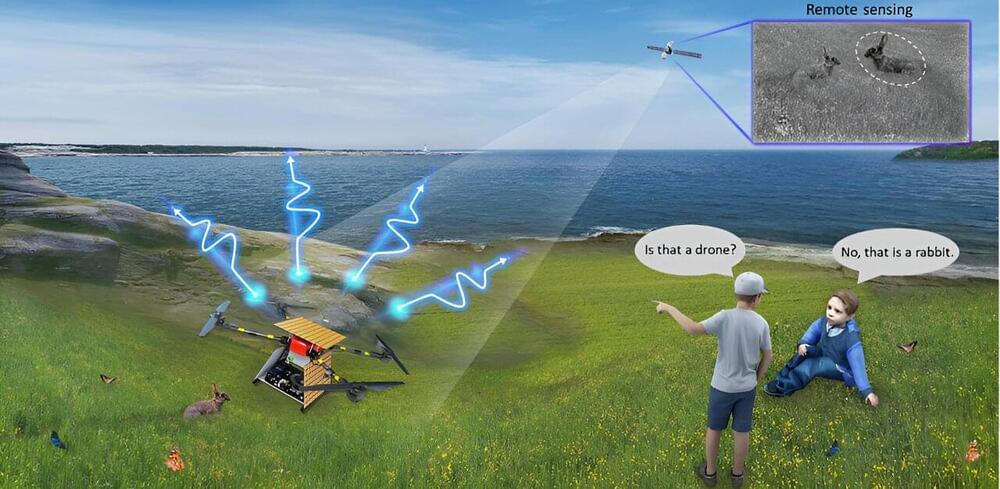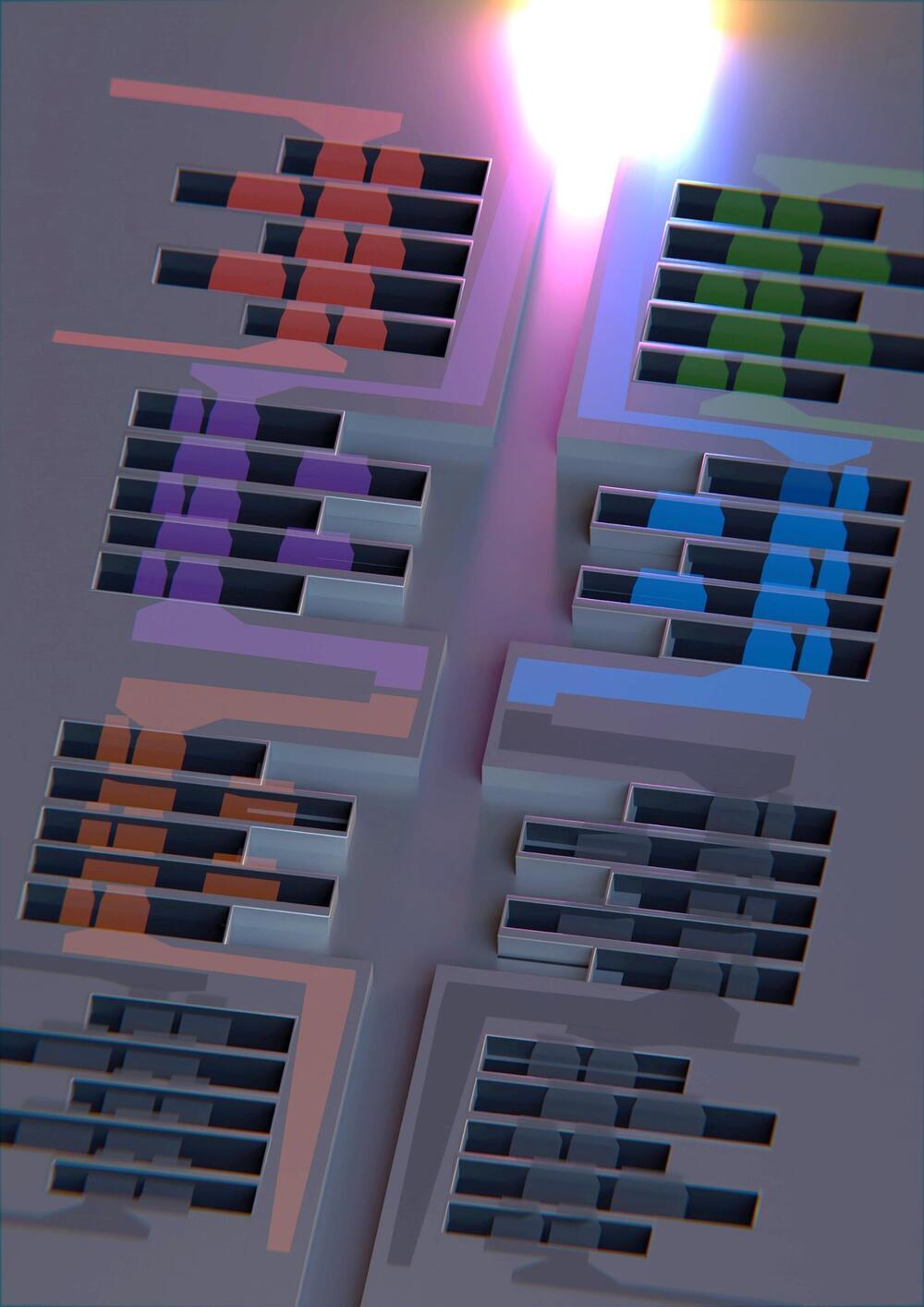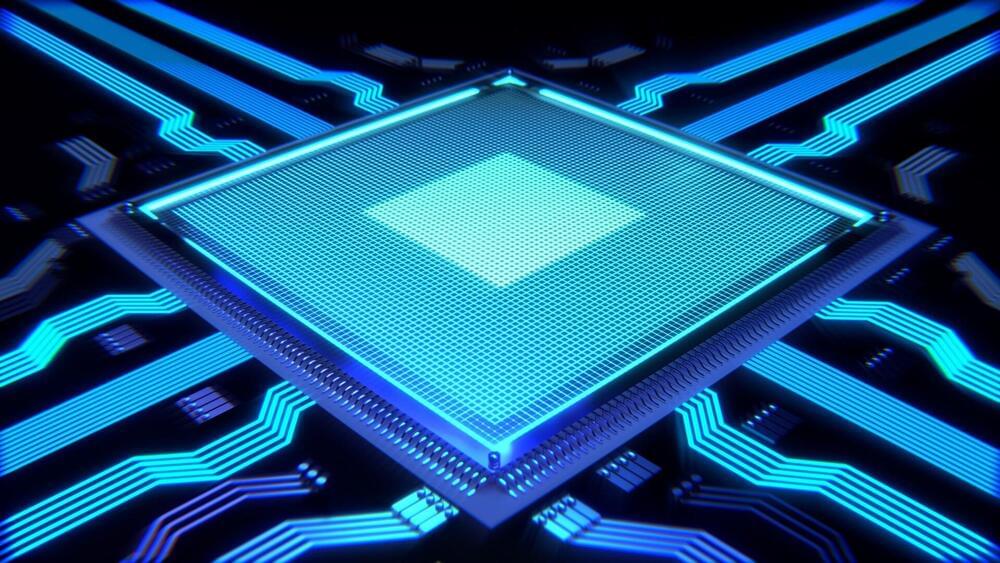Archive for the ‘robotics/AI’ category: Page 306
Mar 9, 2024
AMD to introduce AI-based upscaling, potentially matching DLSS
Posted by Shailesh Prasad in categories: entertainment, robotics/AI
Something to look forward to: AMD’s FSR image upscaling technology has avoided using AI until now, which has been a double-edged sword in its competition against Nvidia’s DLSS and Intel’s XeSS. A recent interview with AMD’s CTO indicates that the company plans to pivot sharply toward AI in 2024, with gaming upscaling as one area of focus.
AMD has confirmed that it’s developing a method to play games with AI-based image upscaling. Although further details are scarce, this could potentially bring the company’s solution closer to Nvidia’s. In an interview on the No Priors podcast, CTO Mark Papermaster explained how AMD has deployed AI acceleration throughout its product stack and plans to introduce new applications to utilize it this year. “We are enabling gaming devices to upscale using AI and 2024 is a really huge deployment year,” he said.
Nvidia DLSS, Intel XeSS, and AMD FSR allow gamers to increase the resolution at which they play while minimizing the performance impact. However, while DLSS and XeSS utilize hardware-assisted AI, FSR relies only on spatial and temporal information.
Mar 9, 2024
Designing a drone that uses adaptive invisibility: Towards autonomous sea-land-air cloaks
Posted by Shailesh Prasad in categories: drones, information science, robotics/AI
The idea of objects seamlessly disappearing, not just in controlled laboratory environments but also in real-world scenarios, has long captured the popular imagination. This concept epitomizes the trajectory of human civilization, from primitive camouflage techniques to the sophisticated metamaterial-based cloaks of today.
Recently, this goal was further highlighted in Science, as one of the “125 questions: exploration and discovery.” Researchers from Zhejiang University have made strides in this direction by demonstrating an intelligent aero amphibious invisibility cloak. This cloak can maintain invisibility amidst dynamic environments, neutralizing external stimuli.
Despite decades of research and the emergence of numerous invisibility cloak prototypes, achieving an aero amphibious cloak capable of manipulating electromagnetic scattering in real-time against ever-changing landscapes remains a formidable challenge. The hurdles are multifaceted, ranging from the need for complex-amplitude tunable metasurfaces to the absence of intelligent algorithms capable of addressing inherent issues such as non-uniqueness and incomplete inputs.
Mar 9, 2024
Sora Is OpenAI’s New Text-to-Video Generator. Here’s What You Need to Know
Posted by Shailesh Prasad in category: robotics/AI
A machine-learning tool that transforms text prompts into detailed video has generated excitement—and skepticism.
Mar 9, 2024
Researchers’ approach may protect quantum computers from attacks
Posted by Shailesh Prasad in categories: quantum physics, robotics/AI, security
Quantum computers, which can solve several complex problems exponentially faster than classical computers, are expected to improve artificial intelligence (AI) applications deployed in devices like autonomous vehicles; however, just like their predecessors, quantum computers are vulnerable to adversarial attacks.
A team of University of Texas at Dallas researchers and an industry collaborator have developed an approach to give quantum computers an extra layer of protection against such attacks. Their solution, Quantum Noise Injection for Adversarial Defense (QNAD), counteracts the impact of attacks designed to disrupt inference—AI’s ability to make decisions or solve tasks.
The team will present research that demonstrates the method at the IEEE International Symposium on Hardware Oriented Security and Trust held May 6–9 in Washington, D.C.
Mar 9, 2024
Scientists enhance wireless communication with three-dimensional processors
Posted by Saúl Morales Rodriguéz in categories: innovation, robotics/AI
Scientists at the University of Florida have pioneered a method for using semiconductor technology to manufacture processors that significantly enhance the efficiency of transmitting vast amounts of data across the globe. The innovation, featured on the current cover of the journal Nature Electronics, is poised to transform the landscape of wireless communication at a time when advances in AI are dramatically increasing demand.
Traditionally, wireless communication has relied on planar processors, which, while effective, are limited by their two-dimensional structure to operate within a limited portion of electromagnetic spectrum. The UF-designed approach leverages the power of semiconductor technology to propel wireless communication into a new dimension—quite literally.
Researchers have successfully transitioned from planar to three-dimensional processors, ushering in a new era of compactness and efficiency in data transmission.
Mar 9, 2024
Demand for computer chips fueled by AI could reshape global politics and security
Posted by Saúl Morales Rodriguéz in categories: robotics/AI, security
A global race to build powerful computer chips that are essential for the next generation of artificial intelligence (AI) tools could have a major impact on global politics and security.
The US is currently leading the race in the design of these chips, also known as semiconductors. But most of the manufacturing is carried out in Taiwan. The debate has been fueled by the call by Sam Altman, CEO of ChatGPT’s developer OpenAI, for a US$5 trillion to US$7 trillion (£3.9 trillion to £5.5 trillion) global investment to produce more powerful chips for the next generation of AI platforms.
The amount of money Altman called for is more than the chip industry has spent in total since it began. Whatever the facts about those numbers, overall projections for the AI market are mind blowing. The data analytics company GlobalData forecasts that the market will be worth US$909 billion by 2030.
Mar 9, 2024
Elliptic Curve ‘Murmurations’ Found With AI Take Flight
Posted by Saúl Morales Rodriguéz in categories: mathematics, robotics/AI

Draw a line between P and Q. That line will intersect the curve at a third point, R. (Mathematicians have a special trick for dealing with the case where the line doesn’t intersect the curve by adding a “point at infinity.”) The reflection of R across the x-axis is your sum P + Q. Together with this addition operation, all the solutions to the curve form a mathematical object called a group.
Mathematicians use this to define the “rank” of a curve. The rank of a curve relates to the number of rational solutions it has. Rank 0 curves have a finite number of solutions. Curves with higher rank have infinite numbers of solutions whose relationship to one another using the addition operation is described by the rank.
Continue reading “Elliptic Curve ‘Murmurations’ Found With AI Take Flight” »
Mar 9, 2024
Using generative AI to improve software testing
Posted by Saúl Morales Rodriguéz in categories: biotech/medical, robotics/AI
Generative AI is getting plenty of attention for its ability to create text and images. But those media represent only a fraction of the data that proliferate in our society today. Data are generated every time a patient goes through a medical system, a storm impacts a flight, or a person interacts with a software application.
Using generative AI to create realistic synthetic data around those scenarios can help organizations more effectively treat patients, reroute planes, or improve software platforms—especially in scenarios where real-world data are limited or sensitive.
For the last three years, the MIT spinout DataCebo has offered a generative software system called the Synthetic Data Vault to help organizations create synthetic data to do things like test software applications and train machine learning models.
Mar 9, 2024
Not Science Fiction: How Optical Neural Networks Are Revolutionizing AI
Posted by Saúl Morales Rodriguéz in categories: information science, robotics/AI, sustainability
A novel architecture for optical neural networks utilizes wavefront shaping to precisely manipulate the travel of ultrashort pulses through multimode fibers, enabling nonlinear optical computation.
Present-day artificial intelligence systems rely on billions of adjustable parameters to accomplish complex objectives. Yet, the vast quantity of these parameters incurs significant expenses. The training and implementation of such extensive models demand considerable memory and processing power, available only in enormous data center facilities, consuming energy on par with the electrical demands of medium-sized cities. In response, researchers are currently reevaluating both the computing infrastructure and the machine learning algorithms to ensure the sustainable advancement of artificial intelligence continues at its current rate.
Optical implementation of neural network architectures is a promising avenue because of the low-power implementation of the connections between the units. New research reported in Advanced Photonics combines light propagation inside multimode fibers with a small number of digitally programmable parameters and achieves the same performance on image classification tasks with fully digital systems with more than 100 times more programmable parameters.

















